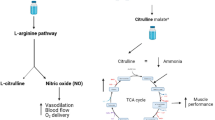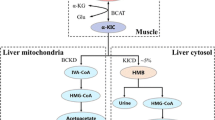Summary
Coenzyme Q, an important component of the electron transfer system in mitochondria, plays a central role in energy production aerobically. The effect of pretreatment with coenzyme Q10 (Co Q) on myocardial slow action potentials (APs) and accompanying contractions and on myocardial high energy phosphate content was studied in perfused hearts subjected to decreased perfusion pressure—hypoxia—substrate-free. Post-hatched chicks were treated i.p. with 10 mg/kg of Co Q daily for 5 days. To study the slow APs exclusively, the fast Na+ channels were voltage-inactivated by elevated K+ (25 mM) Tyrode solution. The Ca++-dependent slow APs were induced by elevating [Ca]0 to 5.4 mM; hearts were paced at a rate of 40 per min. Hearts which had been pretreated with Co Q were protected against the deleterious effect of decreased perfusion pressure—hypoxia—substrate-free perfusion on mechanical performance accompanying the slow Ca++−Na+ APs. The slow APs in hearts pretreated with Co Q were also less affected than were non-treated hearts. However, the myocardial ATP and total adenine nucleotides were not affected by exogenous Co Q. It was suggested that exogenous Co Q could protect against the decline of cardiac contractions via improved availability of slow APs during decreased perfusion pressure—hypoxia—substrate-free, independently of the cellular high energy phosphate level.
Similar content being viewed by others
References
Azuma J, Harada H, Tanimoto T, Sawamura A, Ishiyama T, Araki E, Morita Y, Sperelakis N, Yamamura Y (1981) Contractions and slow action potentials of ischemic and reperfused heart muscle: Protective effect of coenzyme Q10. In: Biomedical and clinical aspects of coenzyme Q, vol 3; Folkers K, Yamamura Y (eds) Elsevier/North-Holland Biomedical Press, Amsterdam, 361–371
Bricknell OL, Opie LH (1978) Effects of substrates on tissue metabolic changes in the isolated rat heart during underperfusion and on release of lactate dehydrogenase and arrhythmias during reperfusion. Circ Res 43:102–115
Crane FL, Hatefi Y, Lester RL, Widmer C (1975) Isolation of a quinine from beef heart mitochondria. Biochem Biophys Acta 25:220–221
Ernster L (1977) Facts and ideas about the function of coenzyme Q in mitochondria. In: Biomedical and clinical aspects of coenzyme Q; Folkers K, Yamamura Y (eds). Elsevier Scientific Publishing Company, Amsterdam, 15–21
Godbjarnason S, Mathes P, Ravens KG (1970) Functional compartmentation of ATP and creative phosphate in heart muscle. J Mol Cell Cardiol 1:325–339
Harada H, Azuma J, Hasegawa H, Ohta H, Yamauchi K, Ogura K, Awata N, Sawamura A, Sperelakis N, Kishimoto S (1984) Enhanced suppression of myocardial slow action potentials during hypoxia by free fatty acids. J Mol Cell Cardiol 16:247–259
Hosono K, Ishida H, Okuda M, Suzuki N, Nakamura T (1981) Protective effects of coenzyme Q10 against arrhythmia and its intracellular distribution; A study on the cultured single myocardial cell In: Biomedical and clinical aspects of coenzyme Q, vol 3; Folkers K, Yamamura Y (eds) Elsevier/North-Holland Biomedical Press, Amsterdam, 269–278
Katagiri T, Sasai Y, Kobayashi Y, Takeyama Y, Minatoguchi H, Yokoyama M, Niitani H (1981) Protective effect of coenzyme Q10 on the acute ischemic myocardial injury, In: Biomedical and clinical aspects of coenzyme Q, vol 3; Folkers K, Yamamura Y (eds). Elsevier/North-Holland Biomedical Press, Amsterdam, 349–359
Katz AM, Messineo FC, Herbette L (1982) Ion channels in membranes. Circulation 65 (suppl I):2–10
Kawasaki T, Hayashi K, Marubayashi S, Dohi K (1981) Preservation of mitochondrial dysfunctions, energy metabolism and viability of ischemic liver by coenzyme Q10 pretreatment. In: Biomedical and clinical aspects of coenzyme Q, vol 3; Folkers K, Yamamura Y (eds). Elsevier/North-Holland Biomedical Press, Amsterdam 337–348
Kiyosue T, Imanishi S, Arita M (1980) Effects of coenzyme Q10 on action potentials and contractions during metabolic inhibition in isolated guinea-pig ventricular muscle. In: Biomedical and clinical aspects of coenzyme Q, vol 2; Folkers K, Yamamura Y (eds) Elsevier/North-Holland Biomedical Press, Amsterdam 47–63
McDonald TF, Macleod DP (1973) Metabolism and the electrical activity of anoxic ventricular muscle. J Physiol 229:559–582
Mellers A, Tappel AL (1966) The inhibition on mitochondrial peroxidation by ubiquinone and ubiquinol. J Biol Chem 241:4353–4356
Mochizuki S, Feuvray D, Ishikawa S, Saso F, Yoshiwara H, Ozasa T, Shimada N, Saito M, abe M, Neely JR (1980) Energy metabolism and function during ischemia and with reperfusion in rat hearts: Effects of substrates, hormones and coenzyme Q10. In: Biomedical and clinical aspects of coenzyme Q, vol 2; Yamamura Y, Folkers K, Ito Y (eds). Elsevier/North-Holland Biomedical Press, Amsterdam, 377–389
Nakamura T, Sanma H, Himeno M, Kato K (1980) Transfer of exogenous coenzyme Q10 to the inner membrane of heart mitochondria in rats. In. Biomedical and clinical aspects of coenzyme Q, vol 2; Yamamura Y, Folkers K, Ito Y (eds). Elsevier/North-Holland Biomedical Press, 3–14
Nayler WG (1980) The use of coenzyme Q10 to protect ischemic heart muscle. In: Biomedical and clinical aspects of coenzyme Q, vol 2; Yamamura Y, Folkers K, Ito Y (eds). Elsevier/North-Holland Biomedical Press, Amsterdam, 409–425
Ohara H, Kanaide H, Yoshimura R, Okada M, Nakamura M (1981) A protective effect of coenzyme Q10 on ischemia and reperfusion of the isolated perfused rat heart. J Moll Cell Cardiol 13:65–74
Reuter H, Beeler Jr GW (1969) Calcium current and activation of contraction in ventricular myocardial fibers. Sci 163:399–401
Schneider JA, Sperelakis N (1974) The demonstration of energy dependence of the isoproterenol-induced transcellular Ca2+ current in isolated perfused guinea-pig hearts: An explanation for mechanical failure of ischemic myocardium. J Surg Res 16:389–403
Shigenobu K, Sperelakis N (1972) Calcium current channels induced by catecholamines in chick embryonic hearts whose fast Na+ channels are blocked by tetrodotoxin or elevated potassium. Circ Res 31:932–952
Sperelakis N, Schneider JA (1976) A metabolic control mechanism for calcium influx which may protect the ventricular myocardial cell. Am J Cardiol 37:1079–1085
Takeshige K, Takayanagi R, Minakami S (1980) Reduced coenzyme Q10 as an antioxidant of lipid peroxidation in bovine heart mitochondria. In: Biomedical and clinical aspects of coenzyme Q, vol 2; Yamamura Y, Folkers K, Ito Y (eds). Elsevier/North-Holland Biomedical Press, Amsterdam, 15–26
Yamamura Y, Ishiyama T, Yamagami T, Morita Y, Ishio S (1967) Clinical use of coenzyme-Q for treatment of cardiovascular diseases. Jap Circ J 31:168
Author information
Authors and Affiliations
Rights and permissions
About this article
Cite this article
Azuma, J., Harada, H., Sawamura, A. et al. Beneficial effect of coenzyme Q on myocardial slow action potentials in hearts subjected to decreased perfusion pressure—hypoxia—substrate-free perfusion. Basic Res Cardiol 80, 147–155 (1985). https://doi.org/10.1007/BF01910462
Received:
Issue Date:
DOI: https://doi.org/10.1007/BF01910462




